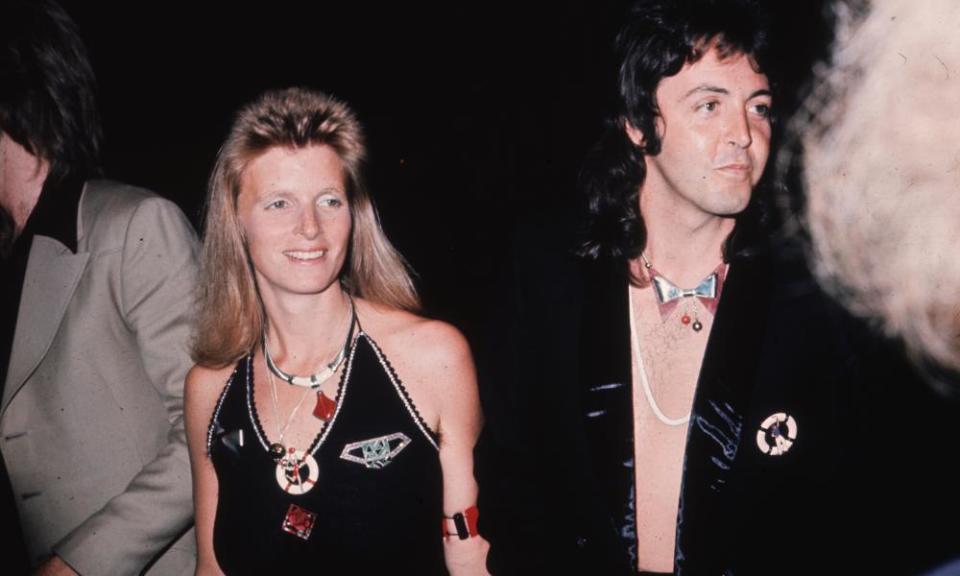Live and let fly: the tall tale of Paul McCartney’s 007 theme song is revealed
It had always seemed inconceivable that the James Bond producers wanted to replace Paul McCartney with another singer for Live and Let Die, particularly as his title song for the 1973 Roger Moore classic became a massive hit.
But the story told by Beatles record producer George Martin, and repeated by McCartney, was that the 007 producers thought McCartney’s recording with his band Wings was just a demo and they wanted a female voice.
Now Allan Kozinn and Adrian Sinclair, authors of a forthcoming book, have unearthed unpublished contracts in a US university archive which show that the Bond producers always wanted McCartney for the opening credits and another performer for the film’s disco scene.

Kozinn, music critic of the New York Times for 38 years until 2014, said: “This has been a longstanding story in the music world – the producers of Live and Let Die wanted to replace McCartney with a female singer. Martin told the story many times. Paul’s picked it up many times. Actually, the internal communications revealed that it was always in the contract that there would be two versions of the song.”
In his 1979 memoir, All You Need is Ears, Martin recalled playing McCartney’s recording to Harry Saltzman, who produced the Bond films with Albert “Cubby” Broccoli: “He sat me down and said, ‘Great. Like what you did, very nice record, like the score. Now tell me, who do you think we should get to sing it?’ That took me completely aback. After all, he was holding the Paul McCartney recording we had made. And Paul McCartney was – Paul McCartney. But he was clearly treating it as a demo disc. ‘I don’t follow. You’ve got Paul McCartney,’ I said. ‘Yeah, yeah, that’s good. But who are we going to get to sing it for the film?’ ‘I’m sorry. I still don’t follow,’ I said, feeling that maybe there was something I hadn’t been told. ‘You know – we’ve got to have a girl, haven’t we?’”
In one interview, McCartney said: “The film producers found a record player. After the record had finished they said to George, ‘That’s great, a wonderful demo. Now when are you going to make the real track, and who shall we get to sing it?’ And George said, ‘What? This is the real track’.”
Sinclair, an award-winning documentary-maker, said: “That became part of that collection of stories that George and Paul would tell over the years, and nobody ever corrected it.”
He added that the archival material – internal communications between lawyers and others representing McCartney and the Bond producers, Eon Productions – “undermines the story and shows it in a very different light”.
The contracts reveal that McCartney’s father-in-law lawyer, Lee Eastman, negotiated him a fee of $15,000 (£6,430 at that time) for composing Live and Let Die with his then wife, Linda. Further financial arrangements, including the publishing rights, earned him about $50,000, with 50% of the net profits.

In one of the documents, Ron Kass, former head of Beatles label Apple Records employed by Eon, wrote to Saltzman: “Paul McCartney has agreed to write the title song entitled Live and Let Die. He and his musical group Wings will perform the title song under the opening titles.”
Kozinn said: “So we can pretty definitively say that they were not going to replace Paul. One of the versions was going to be with Wings, which would play over the opening titles of the film and the closing credits. There would be a live version of the song performed during the club scene byBJ Arnau, a soul singer. When we saw those documents we couldn’t help but think it was just a misunderstanding.
“Martin wouldn’t have been familiar with the terms of that contract, but Paul certainly would have. One of the things we discovered is that, if it’s a good story, Paul will go with it. He didn’t have any reason to assume that anybody would see that contract.”
It is among research in their book, The McCartney Legacy: Volume I: 1969-1973, described as the most finely detailed exploration of McCartney’s creative life beyond the Beatles. It reflects that, in the 50 years since the Beatles broke up, McCartney’s 26 post-Beatles albums have sold more than 86.5m copies.
McCartney has been contacted for comment.

 Yahoo News
Yahoo News 
